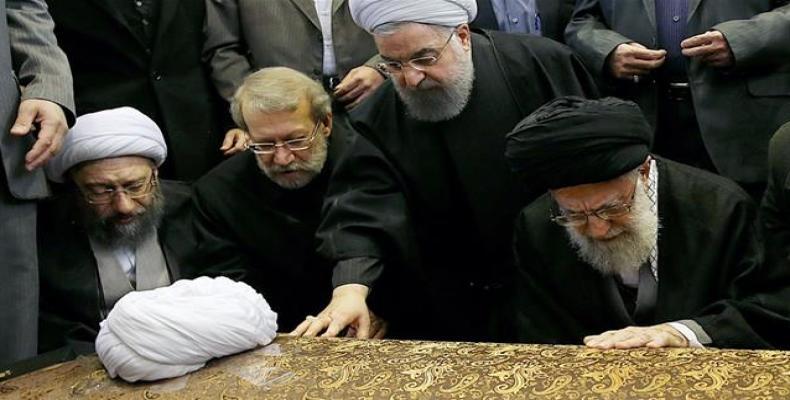Tehran, January 10 (RHC)-- Huge crowds of mourners have paid their respects to Ayatollah Akbar Hashemi Rafsanjani, a former Iranian president and chairman of the Expediency Council, who is viewed as a pillar of the 1979 Islamic Revolution.
On Tuesday morning, a massive mourning ceremony was held for the late cleric at Tehran University, where Leader of the Islamic Revolution Ayatollah Seyyed Ali Khamenei performed the funeral prayers.
President Hassan Rouhani, Parliament Speaker Ali Larijani and Judiciary Chief Sadeq Amoli Larijani also attended the funeral procession. Among other participants were government ministers, lawmakers, military top brass, members of the Expediency Council and the Assembly of Experts as well as a number of foreign ambassadors and dignitaries.
The body of the venerated cleric was laid to rest at the mausoleum of the late Founder of the Islamic Republic Imam Khomeini in southern Tehran later in the day. Tens of thousands of mourners took part in the burial ceremony on Tuesday, which was a public holiday across the country.
Ayatollah Rafsanjani was admitted to Shohada Hospital in northern Tehran on Sunday after suffering a heart attack. He passed away later in the day. He was 82. Iran is observing three days of national mourning in honor of Ayatollah Rafsanjani.
In a sign of mourning, Iranian national flags were also flown at half-staff at the country’s diplomatic missions in a number of countries, including Turkey, Syria and the United Arab Emirates.
Iranians Hold Funeral Ceremony for Former President Ayatollah Rafsanjani

Articles en relation
Commentaires
Laissez un commentaire
Tous les champs sont requisPlus de visites
- Les Etats-Unis ne pardonnent pas ceux qui ne font pas de concessions idéologiques
- Lettre de Petro à Trump : « Je ne veux pas d'esclavagistes à côté de la Colombie, nous en avons déjà eu beaucoup et nous nous sommes libérés »
- Le président du Parlement sri-lankais reçoit l'ambassadeur cubain
- Cuba nie la présence de membres de l'ELN sur son territoire
- Opération Northwoods », le plan de bombardement par lequel les États-Unis voulaient justifier leur invasion de Cuba

